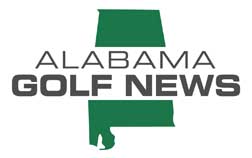Try hitting a shot in the arc of darkness
As total solar eclipse mania sweeps across America in advance of celestial event next month, I’m joining in, which means I’ll be on the move from Albuquerque, where I live, to a spot along the arc of totality.
For this eclipse, I’ve picked Indianapolis, which is on the center line of the arc of darkness. The capital of the Hoosier State “will see a total solar eclipse for 3 minutes and 46 seconds on April 8, 2024, at 3:06 p.m.,” according to the website GreatAmricanEclipse.com.
Indianapolis is about four hours south of Ann Arbor, Mich., where a nephew is getting married on April 6. The plan is to fly into and out of Indianapolis, drive up and back, and catch the show a few hours before departing.
While it is in the path of totality, Indianapolis is not ideal. The New York Times recently published a chart of historical cloud cover for cities along the eclipse’s path; Indianapolis has a record of 88 percent cloud cover for a typical afternoon. So I could go to a lot of trouble to see a cloudy sky grow dark.
(For Alabamians, the nearest point to catch the April 8 total eclipse is somewhere near Paragould, Arkansas, about 90 minutes north of Memphis. That’s about a four hours northwest of Florence and other towns in northwest Alabama, although a shorter drive will get you to the edge of the path of totality, albeit with a shorter eclipse duration.)

This isn’t my first rodeo. Last Oct. 14, along with my partner and a neighbor, I sat in my driveway in under a clear sky as an annular eclipse passed directly over Albuquerque. I had pulled out my eclipse glasses to peer skyward to catch the ring of fire as nearly all of the sun was blotted out by the moon. While it was impressive, “This is nothing,” I told my neighbor. “A total eclipse is totally different.”
I got hooked on solar eclipses late in life, catching my first and only one in Casper, Wyoming, on Aug. 21, 2017. I chose Casper because of the the high likelihood of a clear sky and the fact that it was a straight 10-hour-34-minute shot up Interstate 25 from Albuquerque.
A single goal: Hitting a drive during a solar eclipse
My singular goal for that eclipse: Hit a drive in the moment of totality. That’s it. Hit a shot in darkness as the moon moved between the Earth and the sun.
My venue for this feat was the Three Crowns Golf Club in Casper. I rented a minivan for the trip in case I had to pull over and sleep on the side of the road. (More on that later.)
The trip north the day before the eclipse went well enough, as I passed electronic road signs warning of darkness ahead. I found a campground that would let me park overnight for $75. While it was a lot to pay for a parking spot in a plowed dry field with a line of port-a-potties, it was chump change compared to the $1,200 a night the local Motel 6 was charging. An oil-drilling town, Casper is no stranger to booms and busts, and prices for everything that week were out of sight. A bottle of water at the campground went for $10.
Although a million people descended on Casper, I had no trouble getting a tee time at Three Crowns. Apparently, I was alone in my eclipse golf quest. My plan was to catch the eclipse somewhere on the back nine for the 2 minutes and 25 seconds of totality, hit my drive, finish my round and jump right back on I-25 for the drive home.
I had hoped the folks at Three Crowns would let me park in their lot the night before, but they wanted upwards of $100, with no access to a bathroom. So a plowed field with port-a-potties it was going to be.
My neighbor at the campground was a 30-something New Yorker who said he worked on Wall Street. He set up a two-room Taj Mahal tent with real furniture and spent the night arguing with his girlfriend. My other nearest neighbor was a young, heavily tattooed woman with a Subaru Outback and a backpacking tent. Her body language made clear she wanted nothing to do with an older man with a dome tent, a case of beer and a minivan.
On the morning of the eclipse, the weather was perfect – not a cloud in the sky as I gave my neighbors a wave and pulled out of the campground.
It turned out I would be playing as a single on Three Crowns, a 6,950-yard par 71 Robert Trent Jones Jr. layout built in 2005. Quite playable for an RJT II course, as I remember. Through 12, I was playing well enough to possibly break 80. I was on No. 12 green when the moon started chewing into the sun at 10:22 a.m.
Over the next five holes I played slowly, to make sure I didn’t finish too soon. I took frequent breaks in between shots to gaze at the sun through my $12 NASA-approved cardboard eclipse glasses. By No. 16, I decided my shot in totality would occur on the straight-away par 17th hole.
Getting psyched for the coming spectacle
There was no fear of being called for slow play. Along with a smattering of other golfers spread across the course, I settled down for the show, which began promptly at 11:42 a.m., as advertised.
Now, before I go any further, I must admit that I was somewhat underwhelmed as the sun disappeared behind the moon. With easily 97 percent of the Old Sol covered by Old Man Moon, I judged the ambient light to be about the same as that on any cloudy or rainy day. I spent the final moments in the dimming sunlight teeing and lining up my shot in totality. I was psyched and not a little worried I’d blow my big moment, the one I had driven more than 700 miles for.
As the final sliver of sun disappeared, I became a believer. It got dark. Real dark. Real fast. No haze or light around the moon. Just a hole of darkness where the sun had been surrounded by more darkness. It got easily 10 degrees cooler, the light breeze that had been blowing stopped and the leaves on the trees stopped rustling, birds stopped chirping and streetlights some 200 yards away came on. It was downright spooky.
I set about my task. The ball teed up and already in my stance, I took one last look with my iPhone’s flashlight, turned off the light and let ‘er rip. From the sound and the feel, I knew I’d made good contact. I re-teed and swung again at my provisional, with the same satisfying feedback.
For the next minute or so, I stood in darkness and quiet in awe of what had just occurred. I realized the awe, fear – even terror – ancient people would have felt as they tried to process the actions and intent of an all-powerful god who could make the sun disappear.
When the sun and the sounds and sights of the golf course returned, I hit a second provisional. I spent 10 minutes looking for the two shots struck in totality (this was before the 2019 rule change dropped the search time to three minutes), On this point, I wonder if my ruling was correct: Since I had no idea where either ball went, and therefore no idea of where to search for one or the other, was I entitled to 10 minutes or just five?
Paying the price for playing in darkness
I ended up playing the second provisional, which lay 5 in the fairway. I carded a 2-putt 9 on the par 17th, which played 535 yards for me that day. I missed breaking 80 by a four shots – a small price, I guess, for playing golf during a total solar eclipse.
Recently, when I told a friend, Ken MacLeod, publisher of Golf Oklahoma, about that quest to play during an eclipse, he asked, “Why?” I replied, “I wanted to see what would happen when I hit a shot without knowing where it would end up. His reply: “Isn’t that the case for any of your tee shots?”
So, blame it on the sun, or more accurately, the moon.
Footnote: My eclipse expedition planning didn’t take into account that those million visitors to Casper. While we all arrived at different times we all hit I-25 at about the same time, almost all of us headed south. Traffic came to a standstill 50 miles south of Casper. It took close to 12 hours before I reached Cheyenne, 177 miles to the south. Around 1 a.m., I parked behind a gas station to catch some sleep in the back of the minivan.
Would I do it again? Absolutely. Am I looking forward to the eclipse in Indianapolis? You bet, although there will be no golf involved. In scoping out future total eclipses, I see there won’t be many for the rest of this this century, But I do see that Botswana in Southern Africa, will see a total eclipse in 2030, so I’m wondering if I know anybody who can get me on the course at Cresta Mowana Safari Resort & Spa that day.
Dan Vukelich is the online editor of Alabama Golf News. He lives in Albuquerque.
Have a story idea or a news item to report to Alabama Golf News? Email gregg@alabamagolfnews.com
Featured image of the path of the April 8 total eclipse courtesy of Space.com











